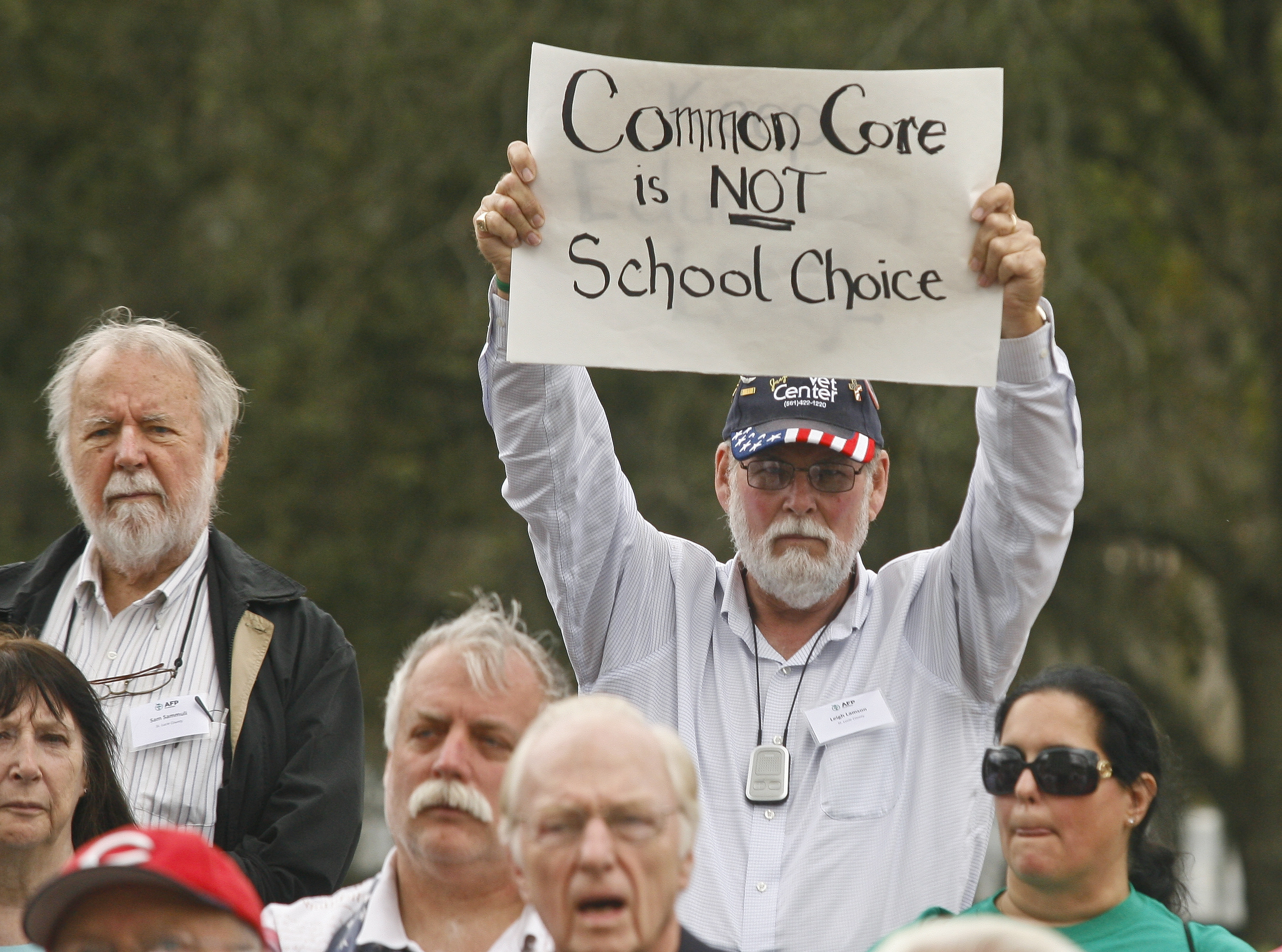The Common Core curriculum has been surreptitiously implemented in public schools over the last few years and the majority of states are working toward educational opportunity through a different avenue after finding failures in the federal program.
Videos by Rare
The Department of Education has defined common standards as “a set of content standards that define what students must know and be able to do and that are substantially identical across all states in a consortium.” Standards for English and math have been opposed by teachers around the country, for taking the fun out of learning and streamlining education without considering the individualistic experience that education is.
“Standards were developed in 2009 by the National Governors Association (NGA) and Council of Chief State School Officers (CSSO), but immediately incentivized by the Obama administration with $4.35 billion in competitive Race to the Top grants and No Child Left Behind waivers,” said Brittany Corona, research assistant at the Heritage Foundation.
Conservative think tank, the Heritage Foundation, told state leaders who believe in limited government and liberty to resist the imposition of national standards and tests in their states.
Nevertheless, during the recession, 45 states agreed to implement the standards by the 2014–2015 school year, hoping to get a portion of the billions of dollars on the table and are only now realizing the negative outcomes their choices are having on their state budgets and children.
Despite more than four decades of increasing federal involvement in education (as they say, there’s nothing more permanent than a government agency), including almost $2 trillion in federal tax dollars, high school graduation rates are about the same today as they were in the 1970s.
Upset parents do not believe standards that push mediocrity and a government-developed curriculum is the way to go. Conservative lawmakers have backed up the concerns of their constituents and are promoting the discontinuation of Common Core. Among alternative programs and options — tax-credits, online learning, charter schools, and private schools — the creation of voucher programs is allowing public schools students to have credits toward private, charter or home school options, according to the National Conference of State Legislatures.
In Indiana, the state Legislature passed a bill Wednesday to remove the state from Common Core national standards. Gov. Mike Pence is expected to sign it and incorporate “college and career readiness educational standards” by July 1, 2014. Fifteen additional states have also withdrawn from the “federal testing consortium, downgraded their involvement, paused implementation of the standards, or introduced measures against the standards.”
In fact, the school choice movement may be the most under-discussed movement of this decade. As of 2014, 23 states and the District of Columbia have school choice programs, which typically give a parent or guardian the funding that would go toward a public school education for the student’s education, however the educator sees best fit based on the child’s unique needs.
The school choice movement began nearly two decades ago, in the 1990s. Milkwaukee, Wisconsin was the first in the country to adopt the voucher program.
“Options such as vouchers empower parents to choose better alternatives for their children’s education. Educational opportunity through school choice improves the amount of options available to families and promotes competition, applying economic pressure that can lead to better performance in the public system as well,” Corona explained.
A major frontrunner in the introducing of the plan was Arizona, whose Gov. Jan Brewer was been a proponent in expanding its foothold from solely special-needs kids to all publicly educated students, including preschool. The plan is considered a newer, more modern version of school choice, or as some call it: a “refinement of Milton Friedman’s original voucher idea.”
Parents have an education debit card linked to the Empowerment Scholarship Account that is audited by state officials to ensure the money is put toward education and nothing else. It can be spent on anything from private schools, college courses, textbooks, tutoring, etc. The allowance is likely to not entirely cover a private education, which allows parents to become more invested in their children’s success, both emotionally and financially, pitching in a little extra from their own bank account.
“Already, about 250,000 students take advantage of vouchers and tax-credit scholarships. That’s just a fraction of the 55 million public school students in the U.S., but it’s up about 30 percent from 2010,” Stephanie Simon writes in Politico, proof that the downhill snowball continues to pick up momentum.



